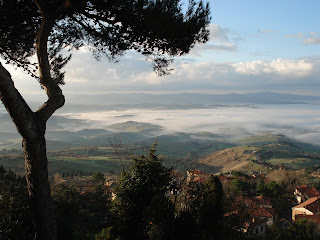Our days in Albania are numbered. In just two weeks we fly to London, then after visiting friends in N. Ireland we head back to our granddaughter and family. How quickly time passes! But in light of that, let me say a few things about scattered topics and places I have not covered.
But before that, a brief comment on the last entry in this blog. There I talked about the lack of electricity in Albania, due partially to unusual drought conditions, partly to long-term infrastructure problems, and partly to politics. I noted that we have come to adjust to electrical outages and the darkness that we are plunged into nightly. On Sundays Nancy and I attend
The International Church, a church that is related to the Assemblies of God, where the services are translated into English, and where I now teach a mid-week class on Philippians. Some Saturday evenings we have also attended a church that is perhaps the largest evangelical church in Tirana, and we attended the Orthodox Student Center service one week. But

the day after I wrote about light, the International Church’s pastor preached on the topic of light, and focused on the ease with which we become accustomed to darkness. That is what I had said, but he added how true that is in our spiritual life as well—and how disastrous. The darkness of our surroundings, our culture, our communities—how easily we adjust, how easily we fit in, how acceptable it becomes… It was a challenge to me!
Anyway, about Albania. Albania is an ancient land. Settled history begins with the Illyrians, pre-Roman contemporaries of the Etruscans in Italy, and continues on from then. The country has a history of being impacted by foreigners, often as invaders, a history that partly explains the paranoia of its former communist dictator. Each foreign influx, Greek and Roman and Byzantine and Ottoman and Italian and German and French and American, both added something to the land and encountered a civilization that was already developed and defined. In Romans 15:19, Paul notes the extent of his preaching as all the way around to Illyricum, and in Acts 20:2 and 2 Timothy 4:10, reference is made to the area around Macedonia, sometimes called Dalmatia. That is Albania today—a land with a long history and many places to visit that contain reminders of this history.
Nancy and I have made it a point to see some of these places, and some will have to wait until another visit. Among the places we have seen is Korce. Set in a valley on the border with Macedonia and Greece, Korce is dominated on one side by Lake Ohrid, and on the other by rugged Balkan mountains. I visited the town with people from the Torchbearers’ Bible School in Erseke, primarily to watch one of their young men who

plays on one of the professional Erseke teams, play football (soccer). The town retains vestiges of the beauty it once had, before suffering the neglect which the whole country experienced under communism. There is a clear French influence in some
of its old buildings, and it is considered a cultural center.

As early as the 4th century AD Eastern Orthodoxy had a strong presence in the area of Korce, that is present southern Albania, and in the 8th century the Byzantine Emperor Leo III placed the area under the authority of the patriarchate of Constantinople. This

Orthodox/Byzantine influence is reflected today in what to me was the most impressive site in the city, the Orthodox Cathedral that dominates the main intersection in town. In stark contrast with the plain church we attend in Tirana, the exterior is striking and the interior

beautiful. Of particular note is the interior woodwork, dominated by the stunning front screen and several amazing carved wood chandelier. What happens inside the church I do not know, but
the priest who showed our little party from Erseke around was most gracious and the outside Christmas lights saying
Merry Christmas clearly reflected the season.




















